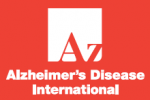The 2011 Alzheimer’s Disease Facts and Figures Report from the Alzheimer’s Association provides a statistical resource for U.S. data related to Alzheimer’s disease, the most common type of dementia, as well as other dementias. Background and context for interpretation of the data are contained in the Overview. This information includes definitions of the types of dementia and a summary of current knowledge about Alzheimer’s disease. Additional sections address prevalence, mortality, caregiving and use and costs of care and services. The Special Report focuses on the benefits and challenges of early detection and diagnosis of Alzheimer’s disease.
Alzheimer’s disease (AD) is the sixth leading cause of all deaths in the United States and is the fifth leading cause of death in Americans aged ≥65 years. Although other major causes of death have been on the decrease, deaths because of AD have been rising dramatically. Between 2000 and 2008 (preliminary data), heart disease deaths decreased by 13%, stroke deaths by 20%, and prostate cancer-related deaths by 8%, whereas deaths because of AD increased by 66%.
Click to get your free report from the Alzheimer’s Association
An estimated 5.4 million Americans have AD; approximately 200,000 people aged <65 years with AD comprise the younger-onset AD population. Every 69 seconds, someone in America develops AD; by 2050, the time is expected to accelerate to every 33 seconds. Over the coming decades, the baby boom population is projected to add 10 million people to these numbers. In 2050, the incidence of AD is expected to approach nearly a million people per year, with a total estimated prevalence of 11 to 16 million people. Dramatic increases in the numbers of “oldest-old” (those aged ≥85 years) across all racial and ethnic groups will also significantly affect the numbers of people living with AD.
In 2010, nearly 15 million family and other unpaid caregivers provided an estimated 17 billion hours of care to people with AD and other dementias, a contribution valued at more than $202 billion. Medicare payments for services to beneficiaries aged ≥65 years with AD and other dementias are almost 3 times higher than for beneficiaries without these conditions.
Total payments in 2011 for health care, long-term care, and hospice services for people aged ≥65 years with AD and other dementias are expected to be $183 billion (not including the contributions of unpaid caregivers).










